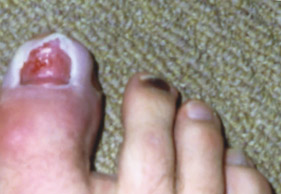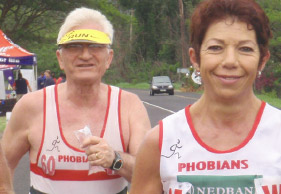Irene Road Running Club (IRRC) is one of the most prominent running clubs in Gauteng North and is known for their eye catching logo ‘Serious about our r(f)un.’ And though it is represented by some talented athletes, it is their incredible team spirit and strong belief in making running fun that has made IRRC the successful and popular club it is today.
HISTORY
It all started with a group of employees from the Agricultural Research Council (ARC) in Irene. This group used to get together and run for fun, until they decided, “Hey, we might as well start a running club.” The nearest running club to the ARC was Alpha Centurion Runners in Clubview and because of all the new building developments in Irene, the group thought a closer running club would be ideal. Shortly afterwards, on 1 February 1994, Irene Road Running Club was officially affiliated to Athletics Gauteng North (AGN).
Initially, there was no clubhouse or any facilities for runners. “We started our time trial under a tree. There was nothing, only beautiful peaceful roads to run on within the ARC,” says Wynand Breytenbach, general manager of IRRC. In 1998, the ARC donated an old building that had originally housed pigs, to the club. “We turned it into our existing clubhouse,” says Wynand. Today the clubhouse is a social hub after time trials on Tuesday evenings.
The club started small. During the first year of its existence, 60 members joined. Six years later, in 2000, the club’s membership reached more than 400. By then, it was the largest club in the province and one of the few clubs in the country that consisted of more than 300 members. Today, it is still the only club in the province with more than 400 members and this year, membership has reached close to 730, making it the second largest club in the country, according to Wynand.
Initially a little tree, symbolising the trees in the grounds of the ARC, was used as the club’s logo. A couple of years later, club members decided to emphasise their strong feelings towards fun and extended the club’s logo to ‘Serious about our r(f)un’. “That is what we are all about – fun,” says Wynand.
The club’s main focus is on the recreational runner and walker as club members believe there are enough organisations that support professional athletes. IRRC chooses to provide opportunities for everyone who has the desire to run or walk. The club aims to make everyone feel like a champion in his or her own right. “Our club is what members make of it.” The members’ commitment to the club is portrayed in the number of chairmen the club has had since its start. Since 1994, there have only been three chairmen, with Pieter Olivier serving as the present chairman.
CLUBHOUSE
The clubhouse is built on the grounds of the ARC Irene Campus in a very sought after farm environment. The biggest advantage is the safe training routes with a minimum of traffic and a variety of flat, hilly and cross country courses. All members have access to the campus at all times. Another benefit of the campus is that it is large enough to host road races without the need to use public roads. There are complete start and finish venues with safe parking for 7 000 vehicles.
The club facilities include a bar that is open after time trials and a shop where members can buy club colours and running shoes. A special club social, with a different theme, is held every first Tuesday of each month. Light meals are sold and lucky draw prizes are given away.
TRAINING
The club offers organised training sessions throughout the week. An official training school is hosted at the ARC and it is managed by a personal trainer. All training programmes are freely available to club members while members of other clubs are welcome to join the training programmes at a monthly fee. Training programmes, held from Mondays to Sundays, cater for all, from the long distance Comrades runner to runners wanting to specialise in shorter distances. Depending on the time of the year, up to 60 runners show up for daily training runs. A number of members focus on triathlons, duathlons and adventure races while most juniors enjoy the cross country season.
ROAD RUNNING AND COMRADES
The club entered a record number of 228 runners for Comrades in 2005, placing them second of 975 clubs in terms of numbers. This year, 166 IRRC runners entered Comrades, making Irene the third biggest club at Comrades. Over 85% of the Irene entrants finished the 2009 race, while three got silver medals and over 12 runners earned Bill Rowan medals, says Wynand. Another 150 club members go along to Comrades every year and enjoy the race from the comfort of the two support stations along the route as well as at the finish area.
The club makes sure that each and every Comrades runner is looked after and pampered before the big race. Comrades runners get goodie bags stacked with expensive products such as socks, supplements and a rucksack.
The club prides itself on having already won a Comrades gold medal, despite the fact that its focus is on recreational and not professional runners. Ann Chester won gold for the club at Comrades in 1998 and in 2005, Heleen Joubert finished as the 13th lady overall.
ROAD WALKING
The club has one of the biggest walking sections with nearly 80 walkers following specialised training programmes. Assistance or training is given to them by other experienced walkers and outside coaches. The club has some exceptional walkers such as Gerard van den Raad, Annatjie Greyvenstein and Elsa Meyer. All three have excelled and achieved national colours. These three Grand Masters will participate in the Sydney 2009 World Masters Games held in October. Elsa is also the South African 20km champion and Annatjie the 10km champ. Their fellow club mate, Belinda Skinner, won the SA 30km Championships recently held in Oudtshoorn.
RACES AND TIME TRIALS
The club hosts two big road races during the year. The Irene 10/21.1km is run in November and has become one of the largest events of its kind. The 5 000 entries at the 2006 event propelled the race to within the top ten largest races in the country. The race has been sponsored by Liqui Fruit for the past 13 years. A new route was introduced last year, making it an even better race within a tranquil environment.
The second race, the Irene Lantern Race, is a 10km event in February and is not only the largest night race, but also one of the largest 10km races in the country. The average number of entries for large night races in the country is about 1 000 while the Lantern Race attracts more than 4 000 competitors. The beauty of the race is that lanterns light the entire route. A third race, a 15km event, is in the pipeline and IRRC promises that this race will be run in a true farm atmosphere. In 2006, Irene presented its first cross country event and the event is now a fixture on the cross country event calendar.
Time trials are held on a Tuesday evening on the grounds of the ARC. Starting time is 17:30 from September to April and 17:15 from May to August. Training is allowed on the premises from 13:00 during weekdays with no restrictions over weekends. Time trials are well attended with more than 100 members participating on some evenings.
SOCIAL SCENE
The club believes there should be a healthy balance between participation in sport and the enjoyment thereof – both for members and their families – as this is a good way to stimulate growth and sustainability in sport. The club’s social scene includes:
- Away weekends to attend races countrywide.
- Away weekends twice a year with emphasis placed on family involvement rather than running.
- Club tents and refreshments are provided at most races. The club has a catering trolley with coffee, tea and eats. Gerard van den Raad, without fail, gets the trolley to all the races, while Koos Loots, a social member, makes sure everyone is well hydrated and fed after a race and that runner’s tog bags are exactly where they were left.
- Monthly socials are held at the club with presentations by sponsors, medical and nutritional experts and gear suppliers.
- Pre- and post-Comrades functions.
- Spring Race/Hat Run.
A special social evening is held every first Tuesday of the month. These evenings are very popular and between 200 and 300 people attend. It is also an opportunity for medical suppliers, coaches and suppliers of shoes and clothing to show off the latest in technology. These functions serve as the perfect opportunity for members to build team spirit. Sometimes the men even get the chance to show off their baking skills by baking pancakes for fellow club mates.
A key element in the success of IRRC is communication. Every Monday morning, each member receives a newsletter with photos of the weekend races and the latest club news. In this way, members get to share in each other’s joy and sometimes even sorrow, says Wynand.
And as it goes in all clubs, IRRC has a group of runners who make the club unique. “We call them the Doringboom gang; they love to sit under a specific tree after a time trial and sometimes they enjoy the drinks more than the run,” says Wynand.
A formal function known as the Chairman’s Ball is held once a year; this year it was held at the Irene Country Club. “We dress up, drink and dance. It’s a chance to show each other we own clothes other than our running shoes, shorts and vests. Sometimes we don’t even recognise each other.” Another more informal function is held at the end of the year and includes a prize giving ceremony where athletes are not only rewarded for outstanding performances, but also for anything remarkable or unique they have done in running circles. Comrades runners get to celebrate their journey at a post-Comrades party held at the clubhouse just after the race.
“It’s our team spirit and visibility at races that stand out. People can see we are having fun. Our club colours are also nice. Some members have joined just because they liked it so much,” says Wynand.
MEMBER SPOTLIGHT
The club’s fun focus does not mean that it doesn’t attract top athletes. Numerous Irene athletes finish in top positions at a lot of running and walking races held every weekend. Annerien van Schalkwyk is one such a member. She finished second overall in the Spar Grand Prix Ladies Challenge in 2007. In 2008, she finished third at the 5 000m South African Track and Field Championships in Stellenbosch and fourth at the Two Oceans Half Marathon in 2008 and 2009. She was also the first lady home in the South African Half Marathon Championships in Port Elizabeth in a personal best of 1:11:49. She represented South Africa at the IAAF Half Marathon Championships in 2008 in Brazil and in October, she is on her way to the same championships, this time in England.
The club prides itself on its strong veteran runners: Dirk Cloete, Greg Barnes, Ansie Viljoen and Lettie Saayman feature amongst the stronger veteran athletes.
A name which will probably be carved into Irene’s history books is that of Marina van Deventer. She recently made the front page of several newspapers after she was dragged for kilometres through the snow at the gruelling 52km Rhodes Ultra Marathon. Marina broke her ankle in two places after stepping in a hole about 25km into the race. Fellow athletes had to set it using thorn branches and plastic bags. The road the athletes were running on was covered in snow and no vehicles could gain access. Fellow running mates dragged her through the snow before they could find help at a medical station. Marina is recovering well and still attending time trials, though she can’t run, says Wynand.
ACHIEVEMENTS
The club is proud of their group performances:
- Most entries for many races such as the Spar Ladies races.
- Top five largest clubs with entries at Comrades and Two Oceans.
- Most entries in a number of community events.
- Largest support group at the Wheelchair Race for the Pretoria School for the Disabled.
- Gauteng North Club Time Trial Champions.
In 2007 members of the club achieved:
- 175 podium positions at races.
- 31 athletes received provincial colours for a variety of events.
- One athlete received National Colours and represented South Africa (Annerien).
- Two national titles (Annerien and Annatjie).
DEVELOPMENT AND COMMUNITY PROGRAMMES
The club is committed to the upliftment of disadvantaged athletes. A substantial amount of funds is used to subsidise running gear and race fees to runners who would otherwise not have been able to participate in the sport.
A number of charities and community organisations also benefit from funds raised during club activities. Beneficiaries include Irene Homes for the mentally disabled. Last year, the club donated R6 000 to Irene Homes, a beneficiary of the club’s annual Hat Race held at the Wally Hayward Race in May.
Tshwane Child and Family Welfare Society is the beneficiary of the Irene 10/21.1km race. Various other community projects include the collection of blankets, stationery, food and Christmas gifts during the year. Members also regularly donate clothing and toys for needy families. “We try to reach out to communities and make a difference in the lives of others. It’s not just about us,” says Wynand.
Irene is a club that functions as a big family. “We care for each other and want people to enjoy life in a healthy environment through socialising and exercising.” If you are as serious about having fun as you are about running, you might want to consider putting on your running shoes and start running for this club.
CLUB CONTACT DETAILS:
WYNAND BREYTENBACH
012 654 0005 / 082 937 0733
info@irenerunner.co.za

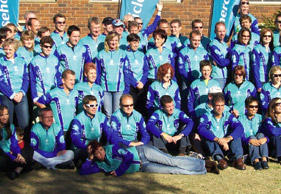
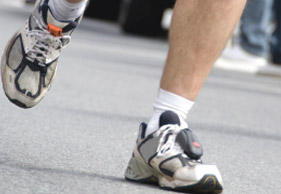
 Gavin Shang – Modern Athlete Expert
Gavin Shang – Modern Athlete Expert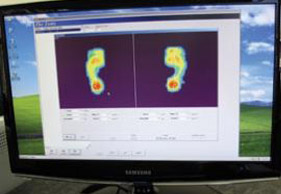
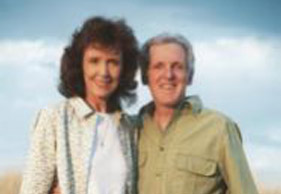
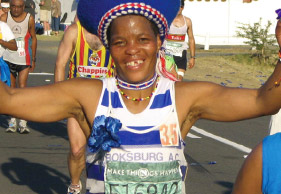
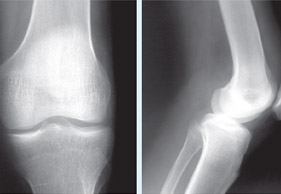
 David van Wyk – Modern Athlete Expert
David van Wyk – Modern Athlete Expert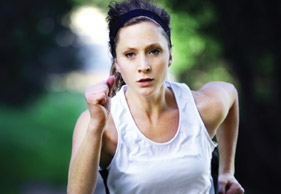
 Adrian Stevens – Modern Athlete Expert
Adrian Stevens – Modern Athlete Expert